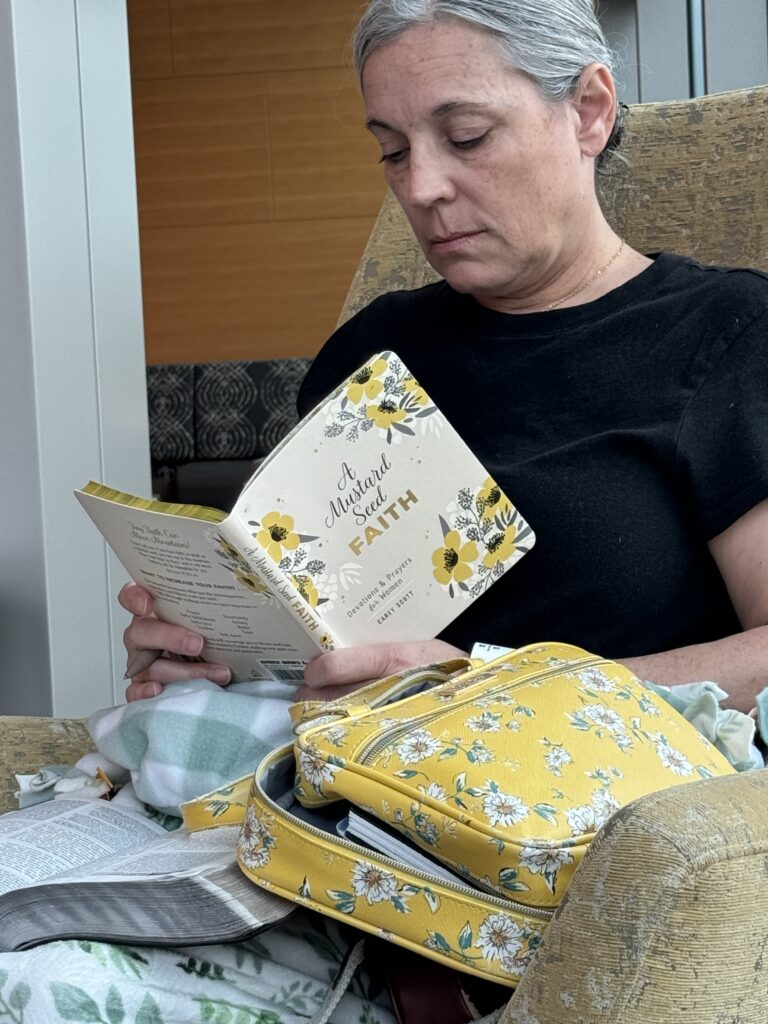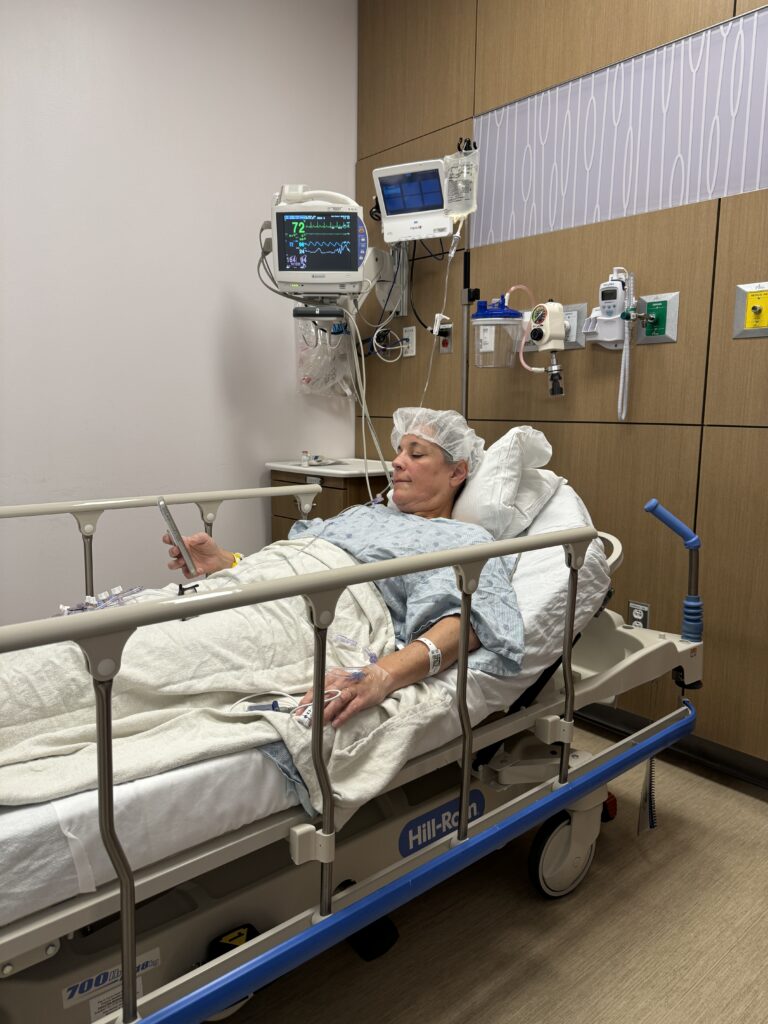Welcome Ya’ll. We are from Crockett, Texas and live out in the Davey Crockett National Forest.
Port Day



August 23, 2024 chemo port (port-a-cath) day.
What is a chemo port?
A chemo port is a device placed under my skin above the muscle in my right chest, which connects to one of my major veins. It looks like a disc around the size of a quarter, with a flexible tube attached.
What are chemo ports used for?
Ports can be used to draw blood and deliver any other intravenous medication I may need during treatment. They can also be used to infuse contrast solution for diagnostic imaging that I will have throughout treatment like CT scans and MRIs.
On treatment days, I have my port accessed once, with a special needle stuck directly into the port. If I need any additional infusions aside from my chemo & immunotherapy treatments or additional blood draws, my nurses and doctors can go through my port so that I don’t have to be stuck in the arm or hand with needle sticks. My chemo port helps to make my cancer treatment infusions a bit more comfortable and bearable.
How are chemo ports placed?
Because ports are under the skin, they’re placed during a surgical procedure. Port installation depends on which vein is used.
Ports can be in the arm or chest, but at MD Anderson, they usually install them in the chest just below the collarbone (which is how mine is), and they lead to the jugular vein or subclavian vein.
A catheter attached to the port will go over the collarbone and into the jugular vein in the lower neck. The tip of the catheter will be where the superior vena cava joins the heart.
You can see the port under my skin slightly and see the catheter in my neck when I turn my head or stretch my neck. I’m able to continue normal activities once my incision wound has completely healed.
How are chemo ports maintained?
During active treatment, my port will be accessed every week for 2 weeks then I will have one week of rest. Then repeat the 2 weeks of treatment with a week of rest. Each time my port is accessed my care team will clean and prep the site with an alcohol-based solution.
A the end of each treatment, my care team will make sure there aren’t any blockages in my line by flushing the tube with saline solution, and then heparin to keep my blood from coagulating in the catheter.
How and when are chemo ports removed?
Once I’m at the end of my chemo/immunotherapy treatments and I no longer need my chemo port, it will be removed in an outpatient procedure. I’ll receive mild sedation, then the skin will be numbed before my care team makes an incision and takes out the port and catheter before stitching up my wound.
Although it was all very intimidating at first as I have never had any kind of surgery procedure, I know it will make having my treatments more bearable and minimize discomfort of being poked multiple times. It will also help with any damage to my veins or scaring them.
